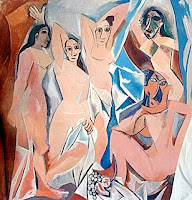Most artists have an identifiable style. It is that kind of style that enables the viewer to recognize that the painting is done by you. How do you develop this? Is it something you automatically have? And how do you develop your own style?
Basically, it is something that you do not develop over night and over time; and something you don't acquire in art classes. It will come as you go along painting after painting. My brother had the greatest influence in my art life. When I was just learning, I used to think of the possibilities of acquiring his style in which, of course, I would not want to happen. I so want to have my own style, something that people would recognize me for. That thought kept on my mind as I continue painting. His paintings were my inspiration even up to this day. I still am not sure if I already have developed that distinctive style in my paintings. Unconsciously or consciously, I think, people would somehow develop his own style. But one thing is certain, galleries like to see a distinctive style of an artist - whatever sort for that matter.
One thing to remember though about style, it need not be a life long commitment. You can change it any time and you will be surprised to find out that it can evolve. I guess, most aspiring artists are struggling with the concept of having his or her own personal style. But please do not get me wrong. There is really nothing wrong with being influenced by another artist's work or even by trying to copy other art works. It is but a learning process for everyone. You learn by doing and perfect your craft by practicing.
I read somewhere that personal style is the extension of your personality. I pondered on it a great deal and somehow found truth in it. It makes sense that a personal style is a combination of choices. Refining your choices can help you create something unique in your own way.
If you are an aspiring artist or just starting to learn, just go ahead and not focus on what style you should develop. Do keep practicing. Do not stop. Enjoy every sketches and strokes you make. Listen to your canvas, get the feel of it and you will be surprised to find as you go along that you may already have developed your own unique style.
Something You Should Do As An Aspiring Artist
- Acquaint yourself with art history. Learn about the different styles done by famous artists.Study their lives and influences.
- Visit museums when you can or you can browse the internet for famous art works. Read what the painting expresses. Study the subject materials, colors, employed techniques and other details that may help you determine the artist's message.
- Tap all methods of painting by experimenting for self-growth.
- Experiment with materials, techniques and subjects. You need not limit yourself with the norm.
- Evaluate your work and be your own critic. Improve from there.












